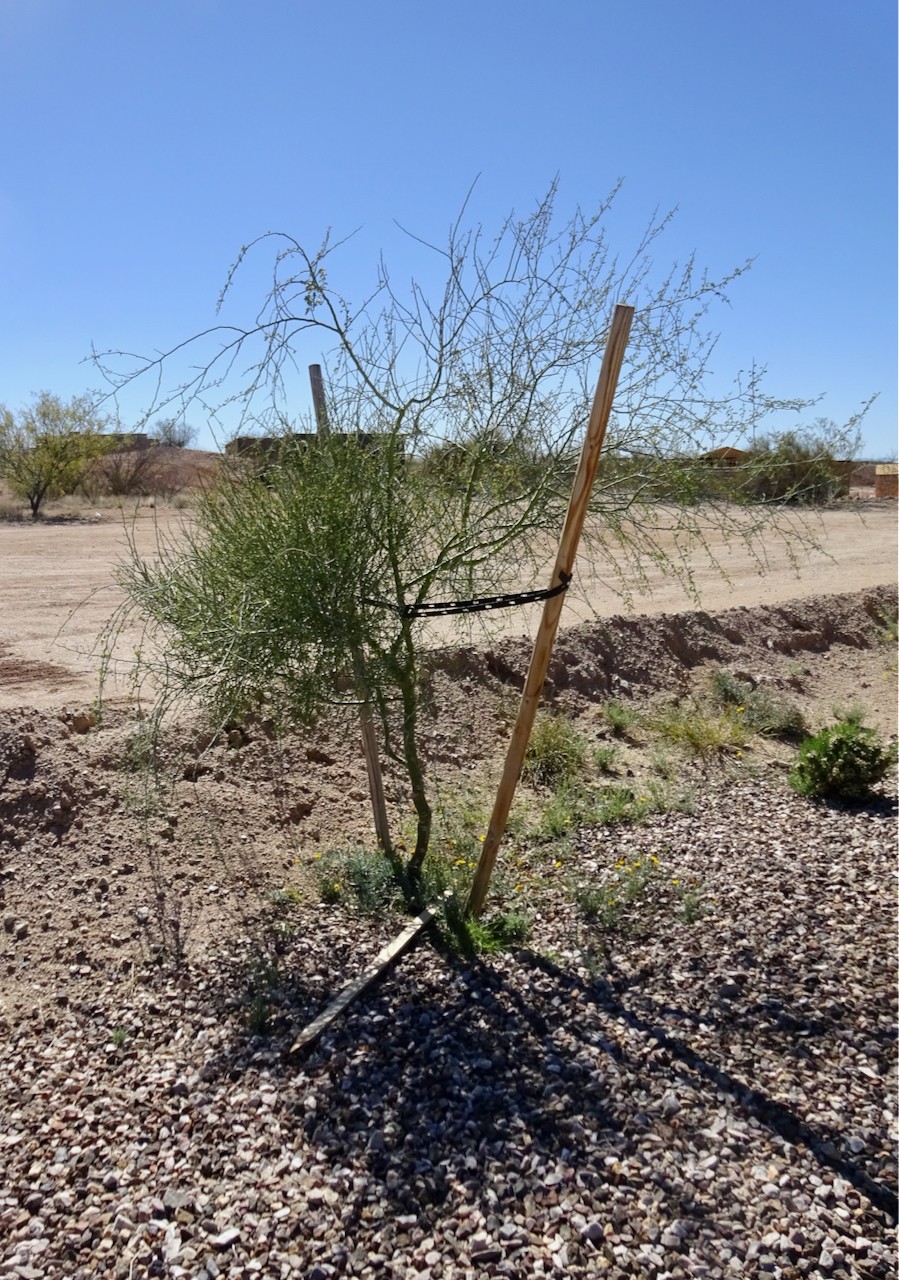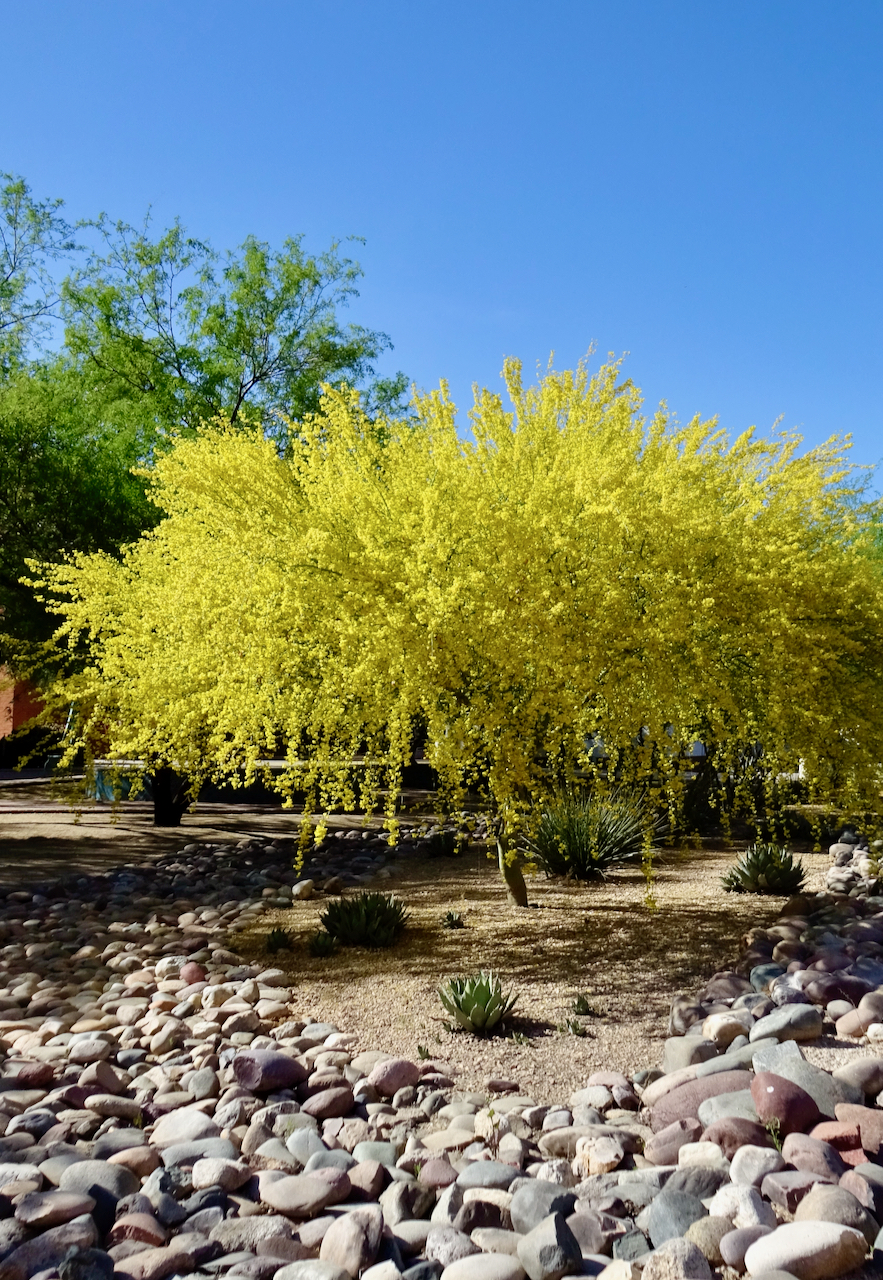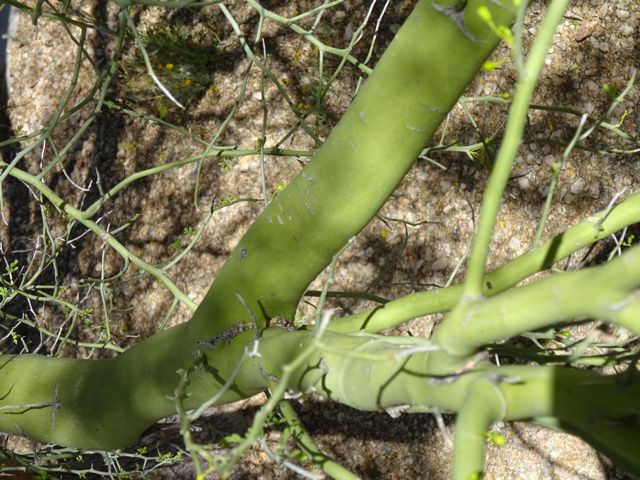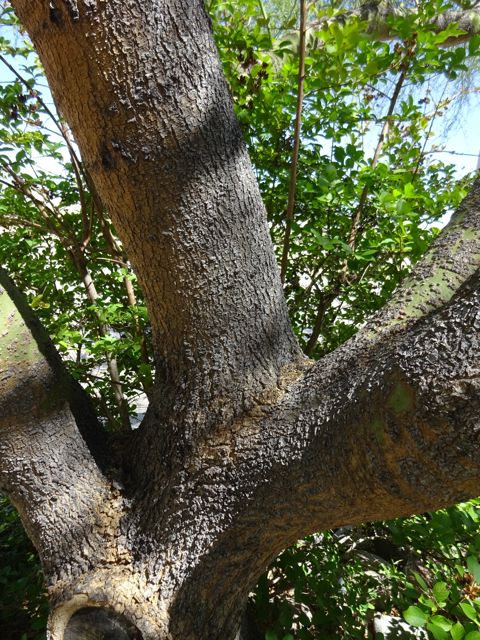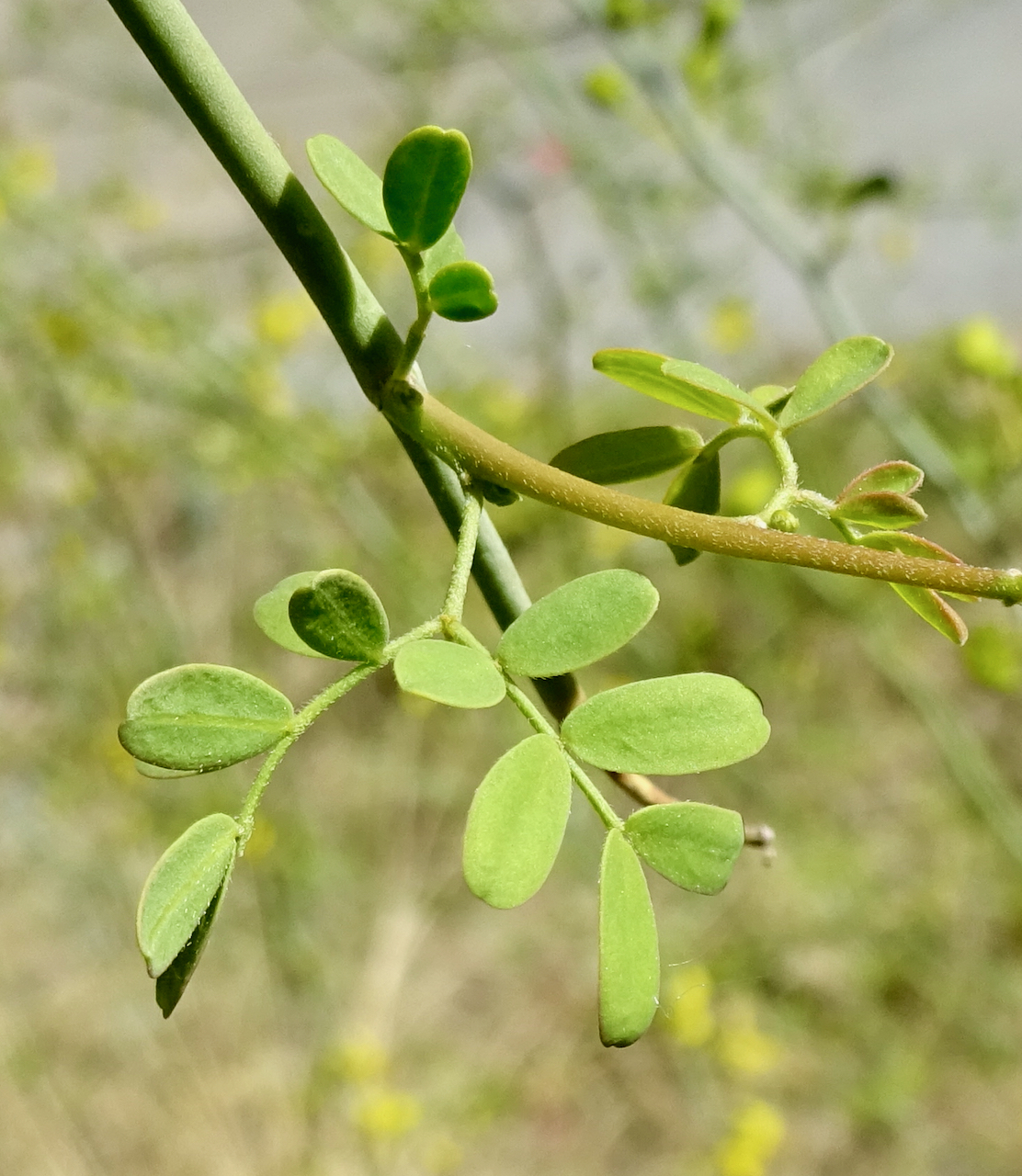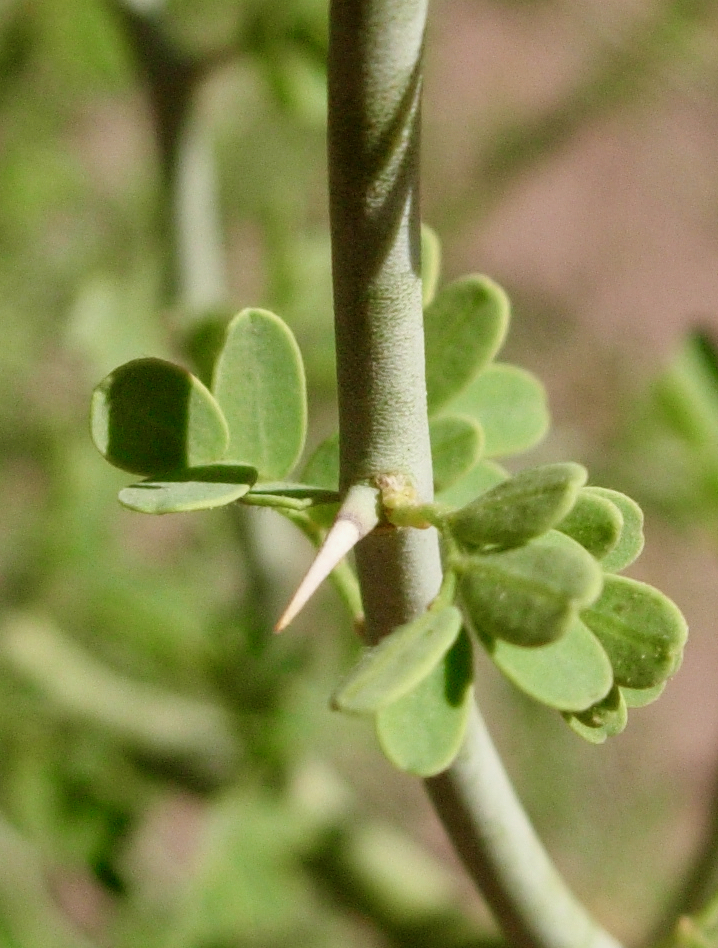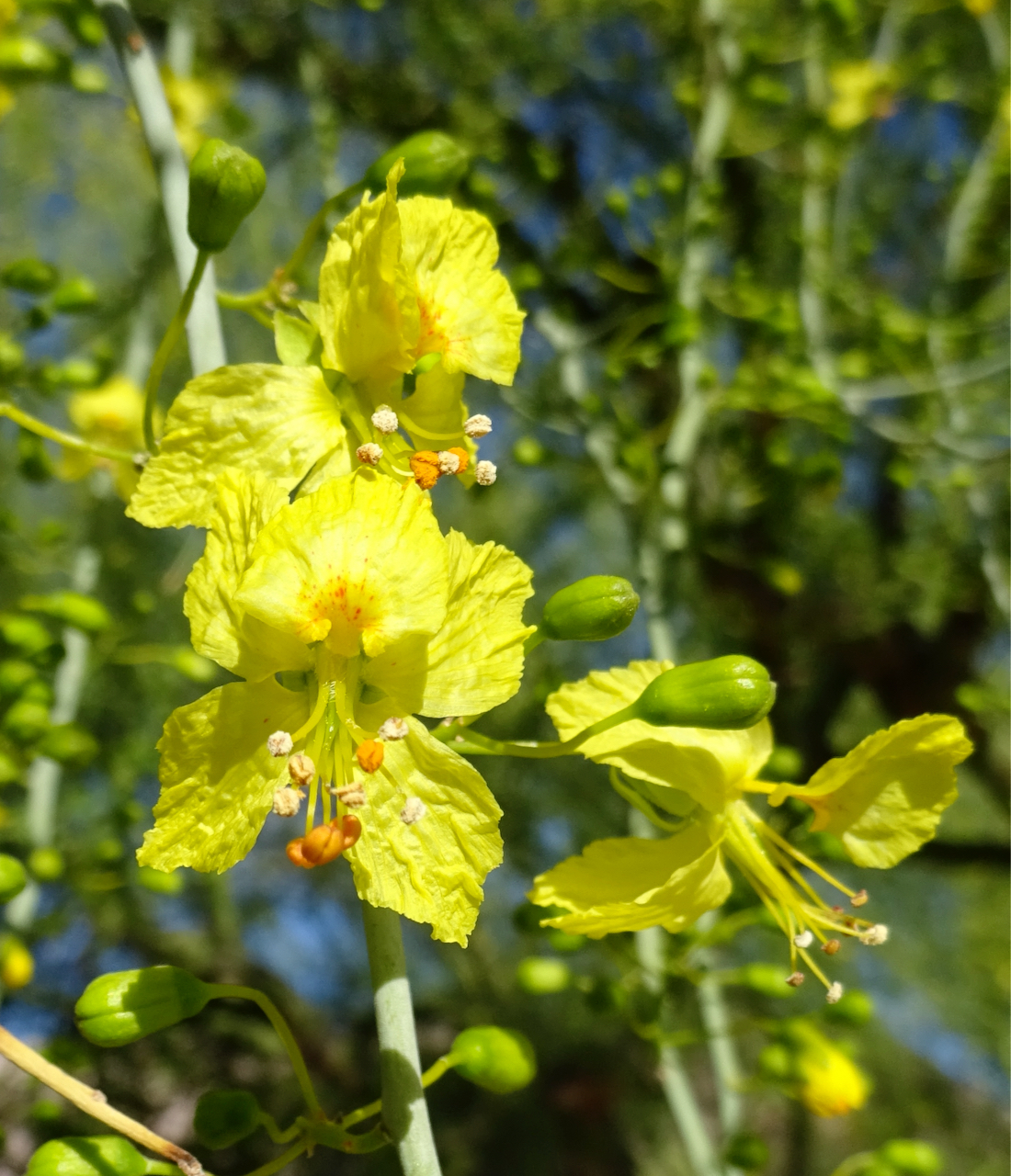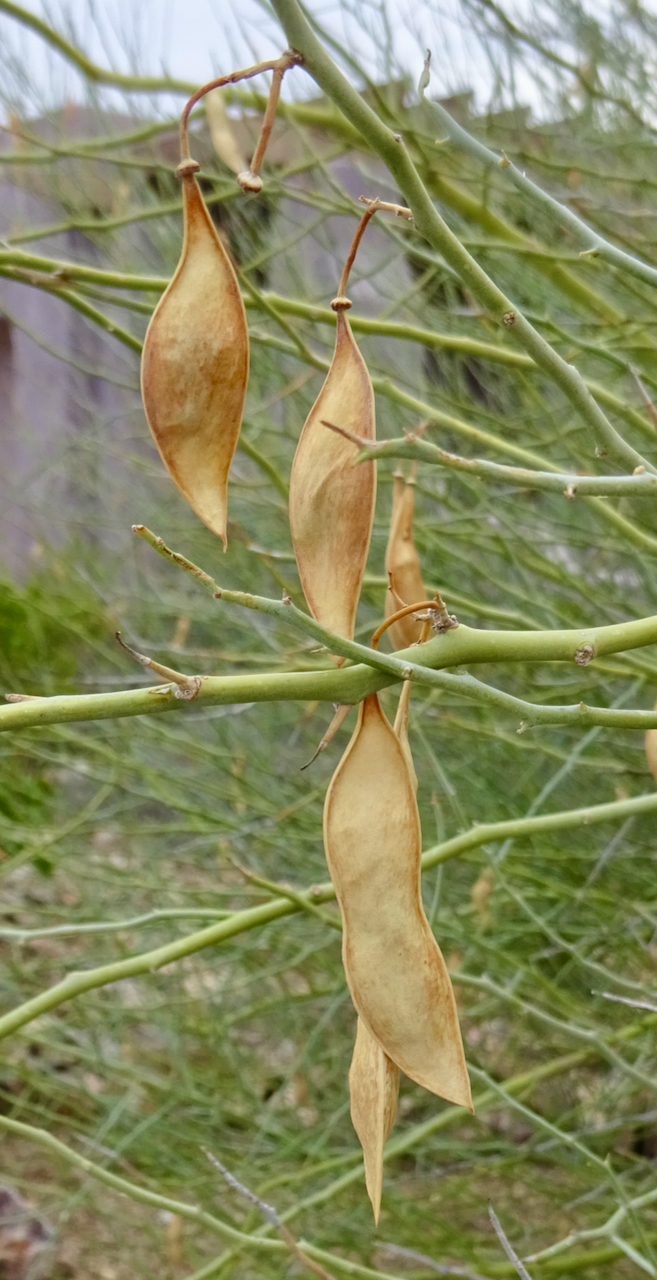Blue Palo Verde
Parkinsonia florida
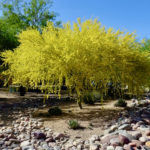
About the Plant
Blue palo verde is the first Arizona palo verde to bloom in spring. Flowers usually begin to appear in late March with peak flowering mid-April. Bright yellow flowers cover the tree, drawing the eye whether planted as a single tree or in a grouping. All palo verdes are known for their green bark that can conduct photosynthesis. Together with littleleaf palo verde (Parkinsonia microphylla), blue palo verde shares honors as the state tree of Arizona.
Blue palo verde grows naturally in drainage areas and dry washes. It can survive on natural rainfall but performs better in the landscape when given deep soakings once or twice over the summer. It will drop its leaves in response to drought or cold.
Blue palo verde is a short-lived tree in the landscape - 30 to 40 years. It is susceptible to palo verde root borers, mistletoe, and witches broom. Both flowers and fruit can create a litter problem. Seedlings are often abundant.
Blue, littleleaf, and Mexican palo verde grow in the Tucson area. Hybrid palo verde ('Desert Museum' and 'Sonoran Emerald') are often planted. This guide will help you tell them apart.
Notes:
- Previous scientific name for this tree was Cercidium floridum and you may still see it listed under this name.
- Blue palo verde is susceptible to a condition known as witches broom that results in dense clusters of branches (see photo below - the witches broom is on the left). Plants with large brooms are prone to breakage. Continual removal of the brooms will result in plants that are always small and stunted. It is estimated more than 50% of nursery trees are infested with witches broom (Ilyas et al.). Research into this condition is ongoing, but currently there is no cure and no reliable preventative measure. The infestation can spread from one tree to another, even to mature plants. Be especially careful purchasing blue palo verde at nurseries. Ask for documentation that the plant is free of witches broom. A small tree with an unusual shape or evidence of heavy pruning may indicate witches brooms were pruned out before the plant was put on display. New witches brooms will begin to grow once the plant is established in the landscape.
Wildlife value: Over 20 different species of bees forage in blue palo verde. Javelina and rock squirrels will eat the seeds. Birds also feed on the flowers and seeds.
More Information
Horticultural information from ASU
Technical botanical description from SEINet
In books:
Native Plants for Southwestern Landscapes by Judy Mielke, page 106 (as Cercidium floridum)
Trees and Shrubs for the Southwest by Mary Irish, page 244
A Natural History of the Sonoran Desert, Arizona Sonoran Desert Museum, page 231 (as Cercidium floridum)
